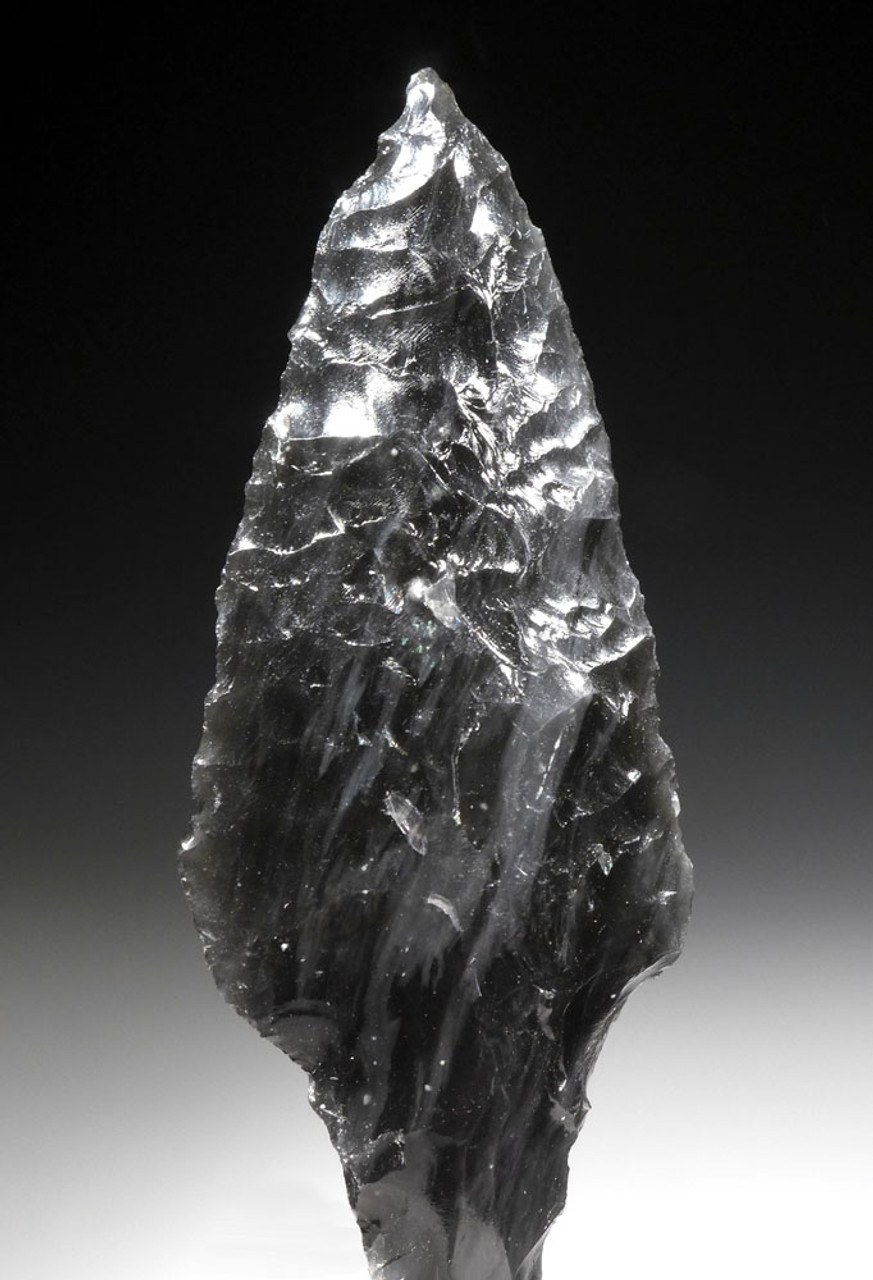Product Description
SEE MORE PRE-COLUMBIAN WEAPONS AND TOOLS
This is a well-provenanced obsidian LARGE BIFACIAL ATLATL POINT from the Pre-Columbian West Mexico Shaft-Tomb Culture. Out of a very large collection, it was only one of two in rare BANDED OBSIDIAN. The flaking and workmanship on this specimen is truly impressive, as is its size. The tip has been worked to a needle-sharp point. The parallel edge flaking to refine its amazing shape and central, symmetrical tang are features this prize specimen can boast of. RARELY are obsidian projectile points this symmetrical, and in this complete, undamaged state!!! Out of a large collection of these projectile points from Dr. Heflin, this was high-graded out as one of the best!
This atlatl spearhead shows masterful knapping to yield its fine symmetry. It was found in the Lake Sayula Region of Jalisco, Mexico. This projectile point comes from the famous Dr. Allen Heflin Collection, formed from his work in Mexico from 1946 into the 1970's. Obsidian projectile points from Pre-Columbian cultures are rarely preserved in this fine condition and seem to be scarcer than are realized.
Intact mineral deposits in micro-crevices are a testament to its age and lack of any modern alterations.
No lithic type is more mesmerizing and flakes as beautifully as obsidian. It was so highly prized by all the Central American Pre-Columbian cultures and for good reason. The sharpest cutting edge of any substance in the world, can only be obtained with obsidian. Obsidian is unique in that it can be flaked down to one molecule in width, hence the popularity with this incredible material in Pre-Columbian weapons and tools. Even today, obsidian scalpels are still used in modern medicine throughout the world.
HISTORY
The Atlatl or Spear (Dart) Thrower was a weapon used to hurl darts called "tlacochtli" with greater force and from greater range than they could be thrown by hand. This weapon was considered by the Aztecs to be suited only for royalty and the most elite warriors in the army, and was usually depicted as being the weapon of the Gods. Murals at Teotihuacan show warriors using this effective weapon and it is characteristic of the Mesoamerican cultures of central Mexico. Warriors at the front lines of the army would carry the atlatl and about three to five throwing darts which they would launch after waves of arrows and sling projectiles as they advanced into battle before engaging into melee combat. The "darts" launched from an Atlatl were more like big arrows about 5.9 feet long. Tipped with obsidian, chert, bone or copper heads.
 US DOLLAR
US DOLLAR
 EURO
EURO
 AUSTRALIAN DOLLAR
AUSTRALIAN DOLLAR
 CANADIAN DOLLAR
CANADIAN DOLLAR
 POUND STERLING
POUND STERLING












